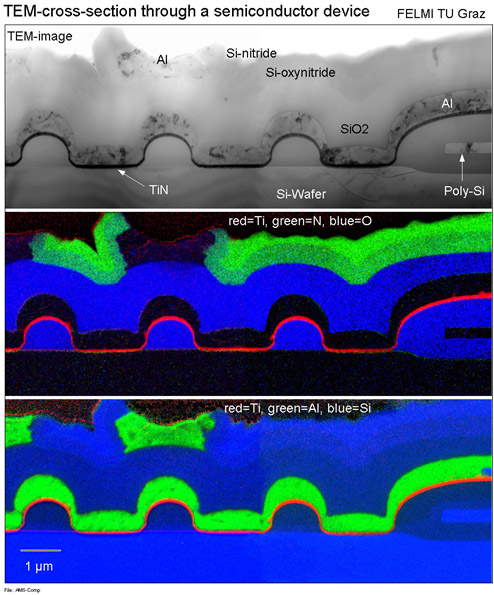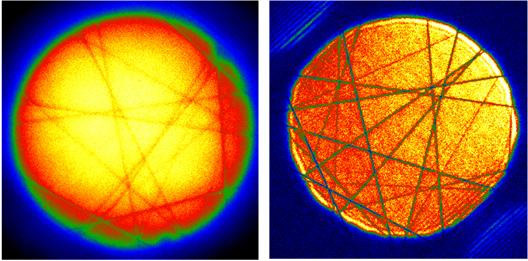Energy-Filtered TEM
By choosing only electrons which have suffered a specific energy loss, it is possible to form an image of elemental composition, such as those shown below. Signal-to-noise ratios are usually much better than EDX. Furthermore it is often (but not always) possible to analyse the full range of elements (apart from H), including He, Li, Be and B, which cannot be detected with our EDX systems. The main difficulties arise when energy loss peaks from different elements overlap.
It is also possible to collect images using electrons which have not experienced inelastic scattering. This can make a huge difference to diffraction patterns, since the wavelength of an electron depends upon its energy; electrons which suffer energy loss are scattered through slightly different angles, giving a blurred diffraction pattern. The false-colour images below show an unfiltered convergent beam electron diffraction (CBED) pattern on the left, and a zero-loss filtered CBED pattern on the right.



